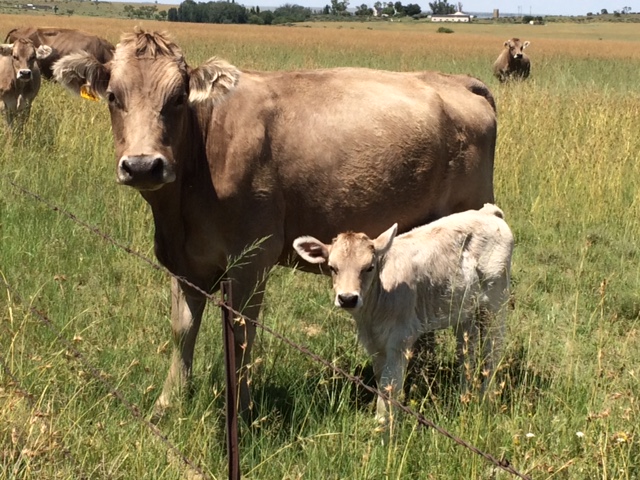
Wesselspunt, Winburg, Free State
Philip Wessels 083 264 2199 / 051 881 2134 or Donsie Wessels 082 562 1222 donsiewessels@gmail.com
• Use Switserland genetics (original dual-purpose type)
• Less course heads for easy calving
• Heavy weaning without extra feeding, milk makes meat.
• Lengthy animals with correct- and strong top line
• Performance indexes are very important
• Phase D extensive veld tested bulls for the market with excellent longevity
The Stud was registered in 1937 and member of the society since then. The late Mrs. Bessie (EJC) Wessels started the herd with a registered bull and two cows. Her husband, being an Afrikaner cattle farmer, thought it good to use the Brown Swiss bull on some of his cows, which gave a very good cross animal and was the start of cross breeding. Eight (8) more cows and heifers were bought from different breeders and brought into the herd.
Philip (PR) Wessels start farming with Brown Swiss cattle Stud and Commercial from 1954 as a 17 year old after his father died. For the last 61 years that Philip was responsible for the stud, our main criteria for selection was to remove the lower 10% of performers under the same herd conditions. Philip feels that if you could select genes for hardiness on the natural veld, we have done it.
Donsie (JC) Wessels retired as lecturer, University of Pretoria and joined her father with the stud since 2010
Very early in the history of the herd it was realised that a large pool of genetics from Switzerland was imperative. During 1950-1964 imported Swiss bulls ORSINO and OLMAT were used as well as HEKTOR, up to 1968. During 1951, two pregnant cows; HIRSCH and BIONDA were imported.
In 1964, a bull and two pregnant cows were imported. The bull KURT and cow GABI from Switzerland and cow BLUMLE from Germany. In 1989 two bulls FINO (meat 60%) and MILOR (milk 60%) from Switzerland. All the imported animals were selected for excellent dual purpose qualities.
IMPORTED EMBRYO’S AND SEMEN were widely used, namely PASGAL, LEHN, FABIAN, HEKTOR, VERICO, WALLY, RISS, ROMEO, RICO, MIRO
May 1950, the first group of bulls and heifers were exported to the previous Belgian Congo, South Rhodesia and South West Africa. A few years later different groups of animals were also imported to Angola in August 1974 in those years, bulls were regularly sent to farmers in the Northern parts of Namibia. Philip was invited by the SADABANDEIRA Agricultural society to visit their cattle show. To my surprise the 17 Brown Swiss entries were all from the Alphine Stud.
Alphine was presented 2011 and 2012 with the trophy for the best performing herd by the Agricultural Research Council and for the two out of the best three production cow rewards in 2012.